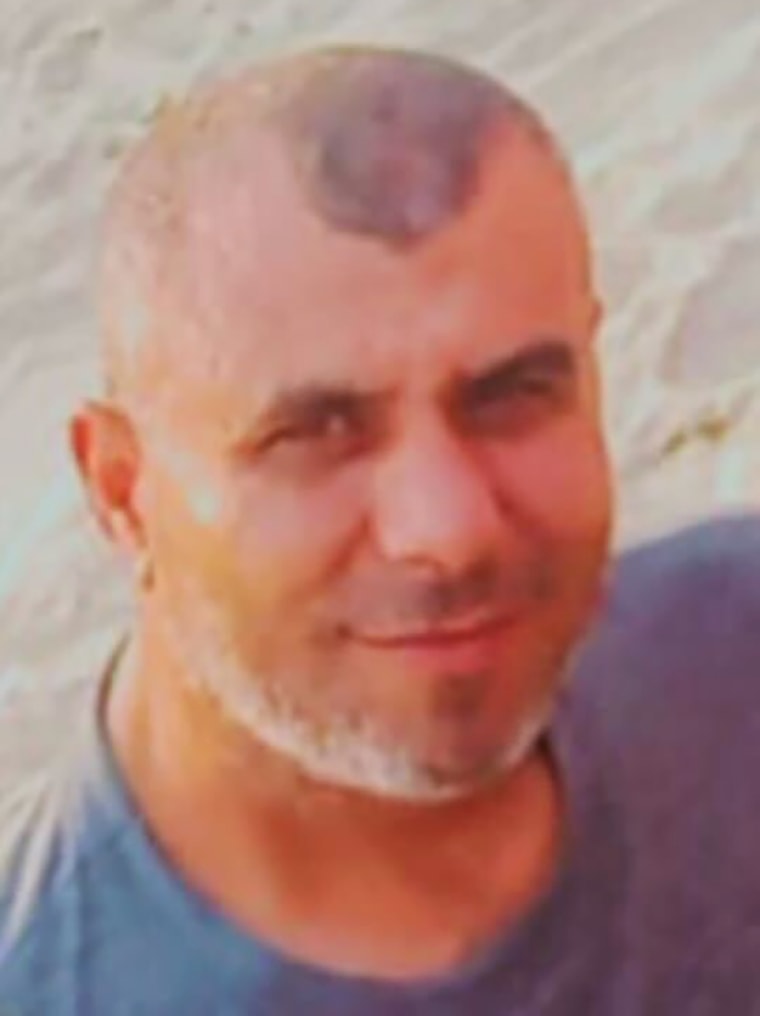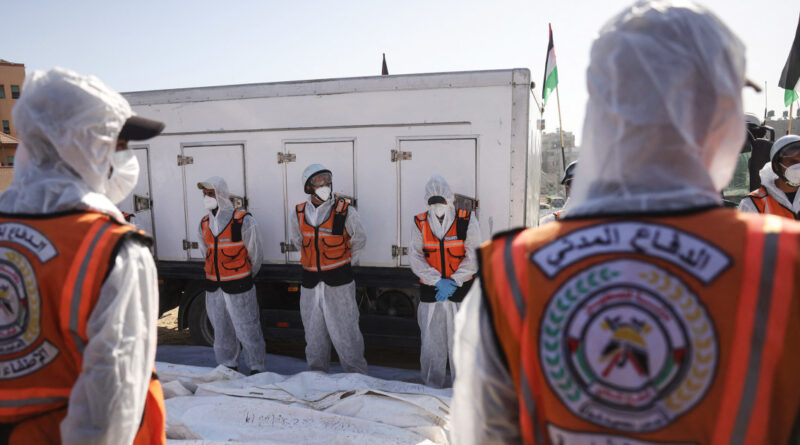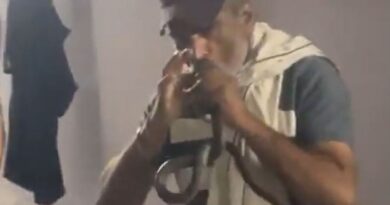In Gaza, a mass burial offers little closure and new questions
Many of the bodies had also arrived with “marks and injuries ranging from abrasions to bruises all over the body,” as well as gunshot wounds and shrapnel injuries, he said. Some had their “hands and wrists bound behind their backs” and were “stripped of clothing, wearing only underwear covering the genital area.” At least two of the bodies still had blindfolds bound over the eyes, while two others had a “wide band around the neck, tied with multiple knots in the front.”
Photos published by the Palestinian Health Ministry in Gaza showing a handful of the remains released by Israel reflected his account, with at least one body also appearing to be covered in large track marks, while also exhibiting deep cuts. One photo showed a foot missing toes, while another showed a hand missing a finger.
“It was clear to me, even without medical or forensic experience, that these were bodies that were brutalized and tortured,” aid worker Kaki said.
“They were not only just bound, but their bodies were twisted in such a strange way,” she said, adding: “There was one man whose head was caved in, so to speak … I think that is one of the ones that will stay with me for the rest of my life.”
Asked to comment on the state of some of the remains and accusations they showed signs of “torture,” the Israel Defense Forces said Wednesday that it operates “strictly in accordance with international law,” adding that it “did not tie any bodies prior to their release to the Strip.”
It said the remains returned so far were “from combatants within the Gaza Strip, and not of detainees taken alive to Israel and executed.” It did not provide any evidence that the bodies returned were those of combatants, nor did it provide their identities.
Asked whether Israeli officials had provided identification details for the remains so far returned to Gaza, a spokesperson said Wednesday that the military was not responsible for determining which remains were returned to the enclave or for providing their identification details. They referred NBC News to the “political echelon.” Prime Minister Benjamin Netanyahu’s office did not respond. The Israeli Justice Ministry referred NBC News back to the IDF.
Sarah Davies, a spokesperson for the ICRC, said that under international humanitarian law, “all possible measures must be taken” by the sides of a conflict “to search for, collect, and evacuate the deceased, as well as to identify them, and endeavor to return the remains of the deceased to their families.”
For some Palestinians, the return of bodies brought some closure, but also immense grief.
Nadra Zaghra, 21, said that for more than two years, her family did not know what had happened to her father.

She said Mohammed Abdel Qader Zaghra, 50, had left their home in Gaza City on Oct. 7, 2023, the day of the Hamas-led attacks in southern Israel, “to find out what had happened,” but that “he never returned.”
Last week, his remains were among the few that were able to be identified. She said this was down to his clothing, but that his remains showed signs of “torture,” with fingers on his left hand removed and his hands “broken to the bone.” He had two “clear fractures” on one leg, with both showing signs of having been tightly shackled, while both of his eyes were “gouged out,” she said.
Asked to comment specifically on Zaghra’s father, including how, when and where he was killed and why his body was held by Israel, the IDF requested his ID number. Provided with his ID number, it then referred NBC News to the Israeli justice Ministry, which referred back to the IDF and to Netanyahu’s office, which did not respond.
Asked about the IDF’s claims that all of the bodies returned had been those of “combatants,” Nada Zaghra said her father was a civilian who used to work as a driver and had “never been a fighter.” She said that like many others, he “heard the news” on Oct. 7, 2023. and “went out like everyone else to see what was going on.”
“But he never returned,” she said. “From that day on, we searched for him until they returned him as a corpse.”





